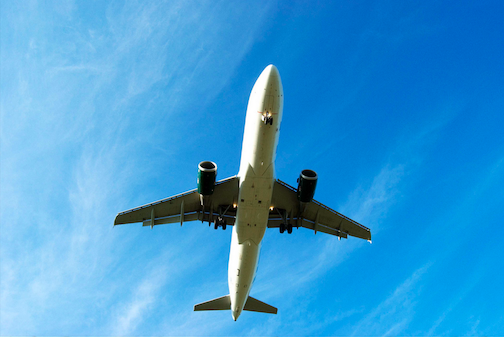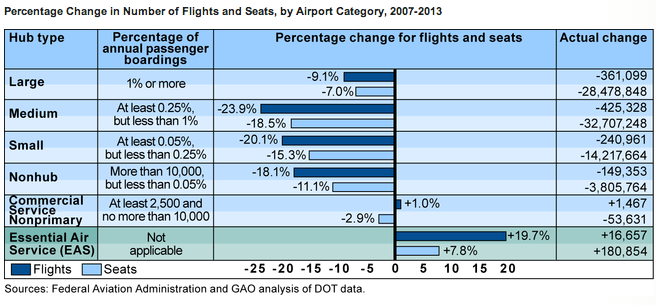Small Airports Struggle To Survive, Lose Most Flight Options Over Last Decade
A new report [PDF] by the Government Accountability Office examines how rising fuel costs, mergers and other factors have created a decline in flight service at small-hubs, and what options could help lift these once prominent airports from the ashes.
While air travel to all airport types has declined since 2007, the 76 non-government subsidized small-hub airports – which cater to approximately 365,000 passengers annually – have suffered the most. These community airports have seen flights decrease by as much as 24% and available seats reduce by nearly 18%.
So what has caused such a dramatic decrease in small airport flight options? GAO found a mix of declining populations in small communities, a more concerted effort to conserve fuel and a pilot shortage for regional airlines have contributed to the decline.
Jet fuel prices have more than quadrupled from 2002 through 2012. The costs not account for 30% of airline operating costs. In a move to cut back on those high costs, many airlines have opted to stop using small aircraft, those that typically seat between 19 and 100 passengers, because they have been found to be 40% to 60% less fuel-efficient than aircraft used by larger airlines.
Small communities have also seen a decline in population over the past 30 years, GAO reports. With fewer constituents there is less of need for air travel. Additionally, the report found consumers are more willing to travel to larger airports in order to access better service and lower fares.
Additionally, airline mergers, such as the one between American and US Airways, have reduced the number of flights operated by regional carriers. This has caused regional airlines to struggle. Those challenges are only exasperated by an expected pilot shortage.
The Boston Globe reports that Republic Airways Holding, which flew 21.5 million passengers last year, had to ground 27 regional flights because they failed to meet their hiring goal by 50 pilots.
In February, the GAO found there was an adequate supply of pilots, but lower starting salaries and new FAA regulations could contribute to a shortage in the future.
While most small-hub airports have encountered declines in service, some small facilities have actually increased flight and seat availability because of government grants and programs.
The number of flights serving the 160 small-hub airports in the federal Essential Air Service (EAS) program has increase by nearly 20% since 2007.
Under the EAS program, if an airline cannot provide air service to eligible communities without incurring a loss, DOT provides an airline a subsidy to serve those communities. The program provides subsidies to airlines to serve small airports that are at least 70 driving miles from the nearest medium- or large-hub airport, or requires a per-passenger EAS subsidy less than $200 unless such point is greater than 210 miles from the nearest medium- or large-hub airport.
Additionally, the Small Community Air Service Development Program (SCASDP), a grant program that helps small communities enhance air service, has increased service by just 1% since 2007.
SCASDP grant funds can be used to cover various projects that can be reasonably related to improving air service to the community, such as any new advertising or promotional activities, or for studies to improve air service and traffic.
Despite an increase in service, the two programs and their associated airports face challenges, the GAO reports. Passengers more often than not choose to use other airlines because subsidized airports lack variety in destinations, fly infrequently and have higher costs than many larger airlines.
GAO found that while these programs have reported an increase in service, most of their flights operate at only about 37% capacity. And as discussed previously, the use of smaller aircraft, especially when not filled to capacity, is not a fuel-efficient, and in turn means the airline or airport is essentially losing more money.
To help small communities better connect to larger airports with out the use of small airports, the GAO suggests several community-based approaches. Bus access to larger airports or air taxi service could be a more cost-effective plan to connect passengers to larger airports than the use of government subsidized small airports.
Status of Air Service to Small Communities and the Federal Programs Involved [Government Accountability Office]
Want more consumer news? Visit our parent organization, Consumer Reports, for the latest on scams, recalls, and other consumer issues.



